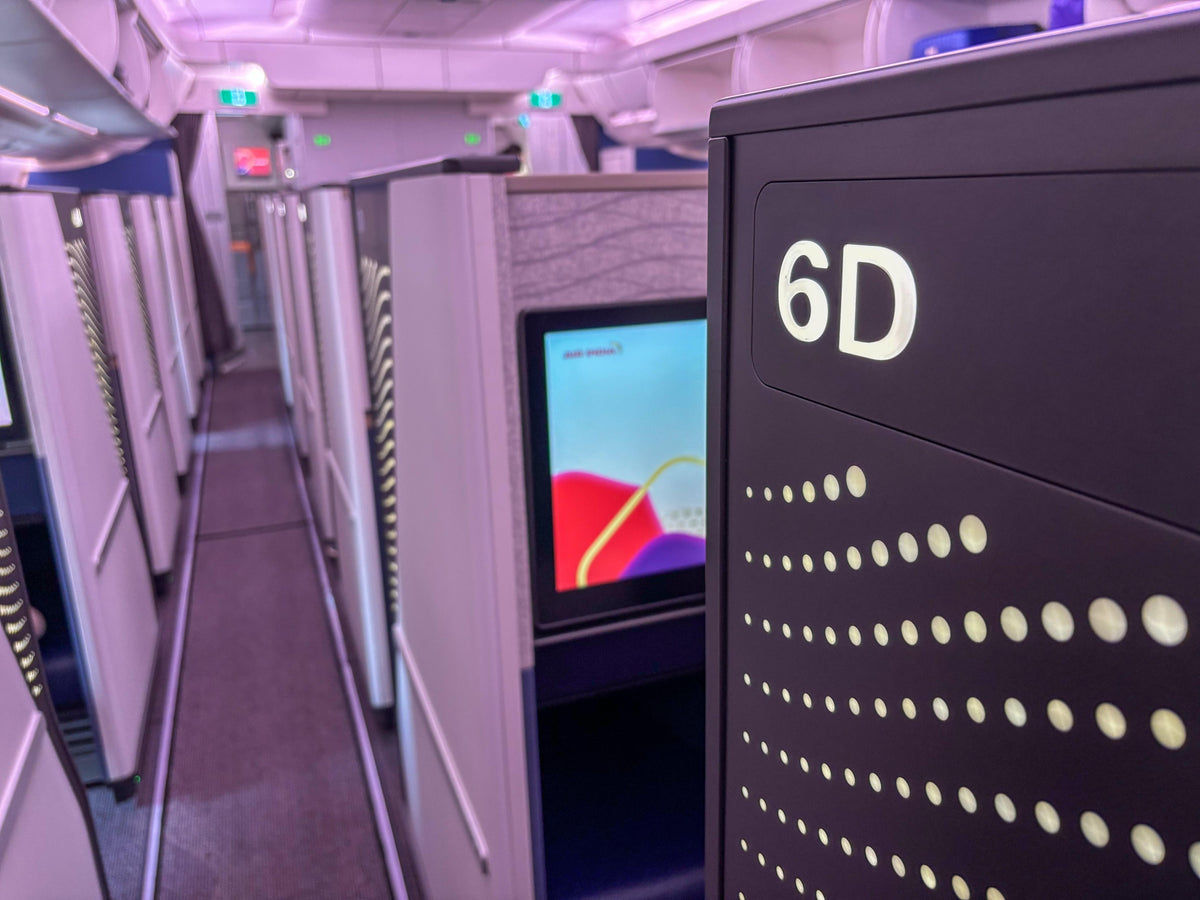
Air India’s A350 Business Class: A Big Step Forward, With a Few Missteps
|
|
Time to read 4 min
|
|
Time to read 4 min
This was my first time flying on Air India’s Airbus A350-900, an experience I had been looking forward to for a while. At the moment, the only domestic sector operated by the A350 is Delhi–Hyderabad–Delhi, making it a rare opportunity to experience the aircraft without stepping on a long-haul route. Internationally, Air India currently flies the type on the Delhi–London and Delhi–New York routes, which represent a significant upgrade from the 777-300ERs and 787-8s that used to serve them.
As an AVGeek and an enthusiastic model collector, I even carried along my 1:400 Gemini Jets Air India A350 model, hoping to capture a few fun photos on board.
On this Delhi–Hyderabad sector, I was traveling in business class. Having seen plenty of promotional images and advertisements showcasing Air India’s new business class product, I was eager to experience it firsthand. The impression was immediate and positive.
The A350 comes with 28 fully enclosed lie-flat business class suites, each equipped with a sliding door for privacy. This design already puts Air India ahead of its legacy wide body cabins. The amount of storage stood out too — from a personal wardrobe for jackets to well-placed compartments for smaller items. Seat controls were intuitive and, more importantly, fully functional. This is a notable shift from Air India’s older aircraft, where broken or half-working seats were often part of the experience.
A highlight of the cabin is the inflight entertainment system. The screen is a generous 21 inches and offers a much larger catalog of content compared to other Air India aircraft.
Being a short domestic hop, certain luxuries available on long-haul flights were absent. The Ferragamo amenity kit, for example, is reserved for international routes, and instead of premium noise-cancelling headphones, domestic passengers receive standard earphones. While this makes sense for a short sector, it does highlight the gap between Air India’s domestic and international service standards.
For a relatively short domestic sector, the dining menu was surprisingly extensive. Air India seems to have put some thought into ensuring that the premium cabin offering doesn’t feel compromised just because of the route length. The options ranged across Indian and continental styles, with a couple of lighter choices as well. I opted for the oriental platter, which turned out to be flavorful, well-balanced, and plated with care. The presentation looked closer to an international business class meal rather than a quick domestic service, and the taste matched the expectation. It was also served promptly after takeoff, which made the experience smooth and unhurried.
The lavatory design also deserves a mention. It felt modern and more thoughtfully fitted out than the ones you’d typically find on Air India’s older wide-bodies. Cleanliness was maintained throughout the flight, and there were a few amenities stocked for passenger use — simple items like hand lotion, sanitizing wipes, and tissues. These may not be luxury-level touches, but they contribute to a sense of freshness and functionality that aligns with the overall updated feel of the A350. For frequent flyers who are used to Air India’s legacy cabins, this difference is immediately noticeable and adds to the impression that the airline is moving in the right direction.
From the very beginning of the journey, the crew made a strong impression. Boarding was smooth, and I was greeted with genuine warmth and professionalism. There was an attentiveness in the way they guided passengers to their seats and offered assistance, something that set a positive tone even before takeoff. Small gestures such as checking in proactively, offering to stow jackets, and ensuring everyone was comfortable gave the service a polished feel.
What really stood out was the sense of pride the crew seemed to carry in operating this aircraft. The A350 is clearly viewed not just as a new plane but as a symbol of Air India’s larger transformation, and that sentiment came through in the way the crew interacted with passengers. Their demeanor suggested they were not simply following service protocols but genuinely wanted to showcase this product as a step into a new era for the airline.
Despite the positives, there were a few notable drawbacks. The onboard Wi-Fi service, heavily advertised as a first for India, never actually connected during the flight. This was disappointing given how much emphasis the airline has placed on it.
Additionally, the seatbelt design felt tighter and less comfortable than expected. Even after asking the crew for help, there wasn’t much they could do to make it better. While not a dealbreaker, these are the sort of details Air India should smooth out if it wants its premium product to truly compete on the global stage.
Overall, this flight offered a glimpse into the future of Air India, and it is a promising one. The A350 is a comfortable, modern aircraft that represents a massive leap forward compared to the airline’s legacy widebody fleet. My short Delhi–Hyderabad flight in business class was memorable, and it will be interesting to see how the product holds up on the longer international routes where passengers spend significantly more time on board.
It’s worth noting that the current cabin was not originally designed for Air India but inherited from the aircraft’s initial intended operators. Air India has retained this configuration for the six A350s currently flying, but it will be fascinating to see what design choices the airline makes for its much larger upcoming widebody order.
